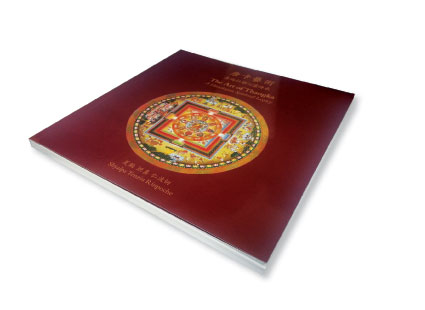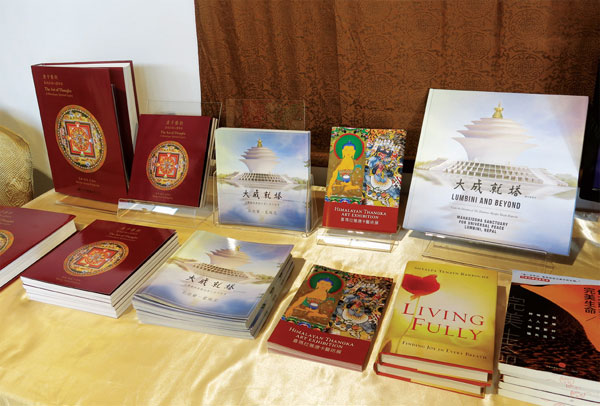A monk for all seasons
Updated: 2014-12-10 08:02
By Chitralekha Basu(HK Edition)
|
|||||||||
Shyalpa Tenzin Rinpoche's enthusiasm for the somewhat mystical art of thangka paintings might go a long way in bringing peace, good cheer to people;s lives. A report by Chitralekha Basu.
He goes to the gym, makes use of business lingo. "It's a win-win-win-win situation," he says, adding, with childlike exuberance, two more "win"s to the regular catch phrase. Shyalpa Tenzin Rinpoche is, evidently, a monk for all seasons.
When he is in Hong Kong, you might catch him running up a narrow, single-track road on his way to the Peak, if you are really lucky. It's probably easier to find him addressing a class in some of the world's finest schools, Harvard, Yale and Wesleyan. He is like a high-profile academic, invited to lecture in universities across continents and probably busier than the CEO of a multinational company. He is the founder of several centers focused on humanitarian activity, such as the Wencheng Gongzhu International Foundation, with branches in Nepal, Hong Kong, Taiwan and Malaysia.
What makes Shyalpa Tenzin Rinpoche really special is the way he is trying to promote Buddhist philosophy through the appreciation of fine art. Great art, according to the Rinpoche, brings those who experience it closer to their own "sacred selves". Last weekend he assembled close to 100 thangka paintings from Nepal, for a viewing at L'hotel Nina & Convention Centre, Tsuen Wan, Hong Kong. The show continues until Dec 15. He invited "friends" to experience how proximity to these masterpieces could be "transformative".
And indeed it was. Looking at the precise and meticulously-layered images - of Buddhist deities, mythological scenes and the mandala - some viewers were visibly moved. Grace Cheung, an art curator, for one, said she was happy and overwhelmed by the "abundant and limitless" nature of the paintings, as they filled her with a sense of "calm and reconciliation".
Georgios T Halkias, a professor of Tibetan studies at the University of Hong Kong, felt some of the images could make for fine instructional material in his classes, the canvases depicting the wheel of life, for example. He was quite taken by the use of some rather unconventional colors, like the earthy green, red and browns instead of the regular luminous yellow - in some of the images. "You can tell these are master artists at work, reflecting the inner qualities in us," he said.
For a worthy cause
The show, and a rather voluminous book - The Art of Thangka: A Himalayan Spiritual Legacy - in which the Rinpoche explains the intricacies of the thangka tradition and the various schools of Buddhist philosophy informing these paintings, came about at the request of the Rinpoche's students from Beijing. "I thought there was an opportunity to enlighten people of the meaning of the thangka."
Having spent considerable time and energy on this veritable encyclopedia on thangka art, the Rinpoche can still go on talking about it, much like the glow and shimmer on the thangka images that never go pale.
"That is the power of the thangka," says the Rinpoche, "it can arouse a spiritual quality in us. It brings on the realization that we are greater than what we think we are. Thangka can inspire hope in people. It radiates with hope."
The exhibition is also a fund-raiser. The money generated from the sales of these gorgeous images and the profusely-illustrated book, will go to the Shyalpa Ladrang Trust Fund to support monks and nuns in Nepal and other philanthropic activities, conducted under the aegis of the Rinpoche.
There is something for everyone remotely touched by the project, says the Rinpoche. "Those who hang the paintings at home get to experience spiritual expression of an enlightened way of life. It helps protect an art tradition and local culture. The beauty and benefits of the paintings are shared. (The endeavor) supports monks and nuns. It's a win-win-win-win situation."
His book, Living Fully: Finding Joy in Every Breath, published in 2012 has been described by a reader on Goodreads as "a great selection of short, fast punk rock songs". Something of a DIY guide to the Buddhist way of life, in which the Rinpoche advocates seizing the moment and living it with clarity, kindness and genuine understanding, which resonates with the ancient Latin aphorism, Carpe Diem (seize the day).
The Rinpoche has his own take on this. "You have to seize the moment spontaneously, without hoping for the consequences, like the bee digs inside a flower without caring that the petals will close at the end of the day, suffocating it to death. Real enjoyment is about accepting who you are, knowing your own abilities and doing what comes naturally."
But is that sense of balance and clarity possible to achieve in these narcissistic times when people tend to get drawn into a vortex of career, family and other such pursuits? It indeed is, says the Rinpoche, "as long as you don't take your life for granted, and you maintain a sense of awareness. You can be intoxicated (by your work) but not drunk. Passion is an important factor. There can be no art without passion."
Contact the writer at basu@chinadailyhk.com
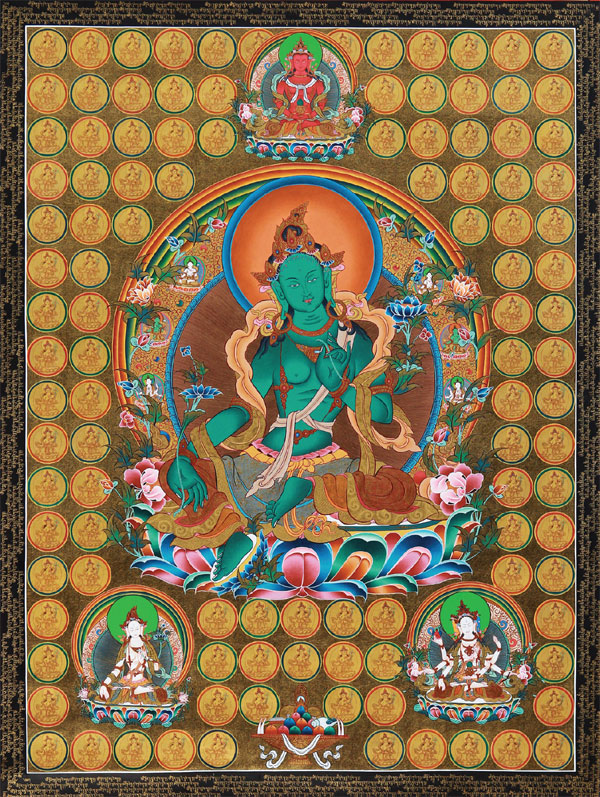
|
The proceeds from the sales of The Art of Thangka and the paintings on show, will be used to support philanthropic activities initiated by the Rinpoche. |
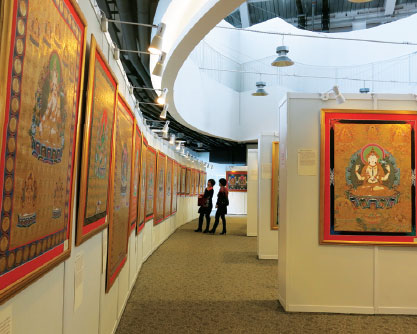
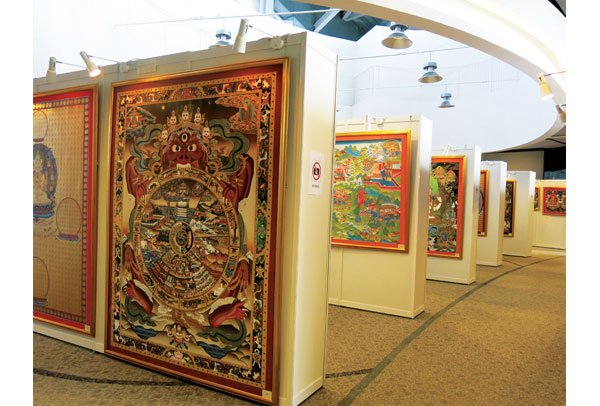
|
Almost 100 most exquisite thangka paintings created by master craftsmen in Nepal, and chosen by the Rinpoche, are on show at L'hotel Nina in Tsuen Wan until Dec 15. Provided to China Daily |
|
Shyalpa Tenzin Rinpoche (left) with visitors at the opening on Dec 6, including Georgios T. Halkias (third from left), professor of Tibetan Studies, University of Hong Kong. |
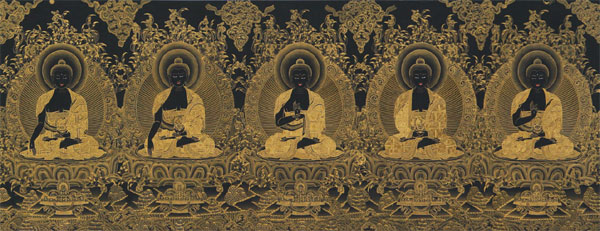
|
The intricate detailing and meticulous layering of paint in thangka art could take three or more years to achieve. Provided to China Daily |
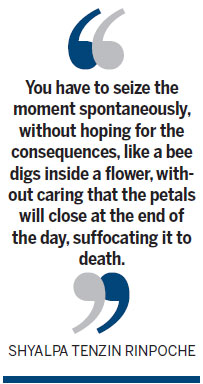
(HK Edition 12/10/2014 page7)
